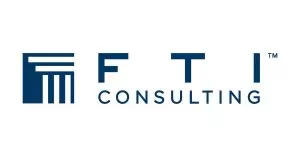START SMALL AND START NOW
Many companies wait until mandatory climate reporting is imminent to pull together a tick-box governance and reporting process: hastily determining risks, adding a few points to their risk register and devising adaptation strategies that are not given enough scrutiny and due diligence to deliver business value. At FTI Consulting, we advise our clients to start preparing for climate reporting as soon as possible, even if a company is not required to report for a couple of years. Climate risk management requires every level of an organisation to be prepared, involving education, training and whole-of-business engagement on how climate risks and opportunities can be tackled.
Wherever you are in your climate reporting journey, starting small but soon is key. For most, this will involve finding gaps in an existing reporting suite, understanding industry best practices and reorganising an organisational chart to deliver on climate.
NOT ALL OF IT IS NEW
Having to factor climate-related risks into business planning may stir up concern for some, however existing business structures and initiatives can be leveraged for reporting in their climate response. It is not a coincidence that frameworks for the management of climate risks and opportunities draw on familiar business concepts and language. This allows companies to understand them easily and recognise where an uplift in organisational structure, strategy and risk management can be implemented to factor in climate. If a company already manages any non-financial sustainability-related risks, these structures could be replicated or adapted for climate. If not, existing structures for other business risk management can be used.
While climate reporting can be treated as a compliance matter, it can also be used for a strategic, governance and reporting refresh, assessing for new business risks, adding new metrics for business performance and developing reporting that will interest a wide range of stakeholders.
FINDING THE GAPS
Companies with some form of climate reporting can begin by understanding gaps in their reporting suite and aligning with existing industry best practices. The following is a brief guide to expose the gaps:
PIC_a
BUILDING KNOWLEDGE WITHIN THE ORGANISATION
Many organisations in Australia are new to climate risk and opportunity management and will require education across all levels of the business, from the board down, on their climate deliverables. Building knowledge through board information sessions, management workshops and understanding employee awareness of climate change risk and adaptation (and what it involves) is a good place to start before moving on to risk assessment and governance structure changes. However, it is vital to take this beyond the board and management team. BUILDING KNOWLEDGE WITHIN THE ORGANISATION While the initial stages of a climate risk assessment and strategy are largely reserved for the leadership, implementation is not. Depending on the risks and opportunities identified and the degree of exposure to climate risk, almost every level of the organisation needs to be aware of what a company's climate resilience planning involves and what everyone's contribution to it looks like. Early involvement makes engagement easier down the line.
COMMUNICATE EARLY
Companies do not have to wait to start communicating about and engaging their stakeholder group on climate. Climate disclosures can be published in the company's reporting suite before mandatory requirements come in to demonstrate progress, gauge stakeholder reactions and benchmark against peers. Addressing a company's climate-related plans openly in its communications and marketing materials is also important. Several stakeholders, from employees to customers, suppliers and the community, are seeking this information. Being transparent and providing useful information in communications only builds trust and a company's reputation. Finally, the energy transition is not going to be delivered by companies working on their climate plans in silos. Collaborating on sustainability initiatives can foster industry engagement, garner state and federal support and increase community engagement, which are all key to shore up support for climate planning, innovation and solutions. Early stakeholder engagement can support future technology research, setting industry-wide emissions reduction targets or jointly working with communities to understand climate action, approaches and benefits.
To view the full article click here.
The content of this article is intended to provide a general guide to the subject matter. Specialist advice should be sought about your specific circumstances.





